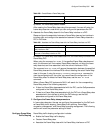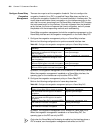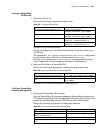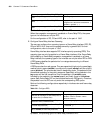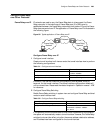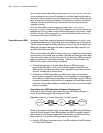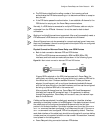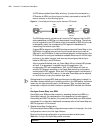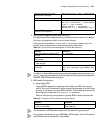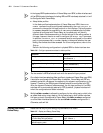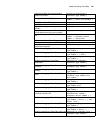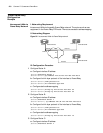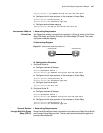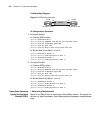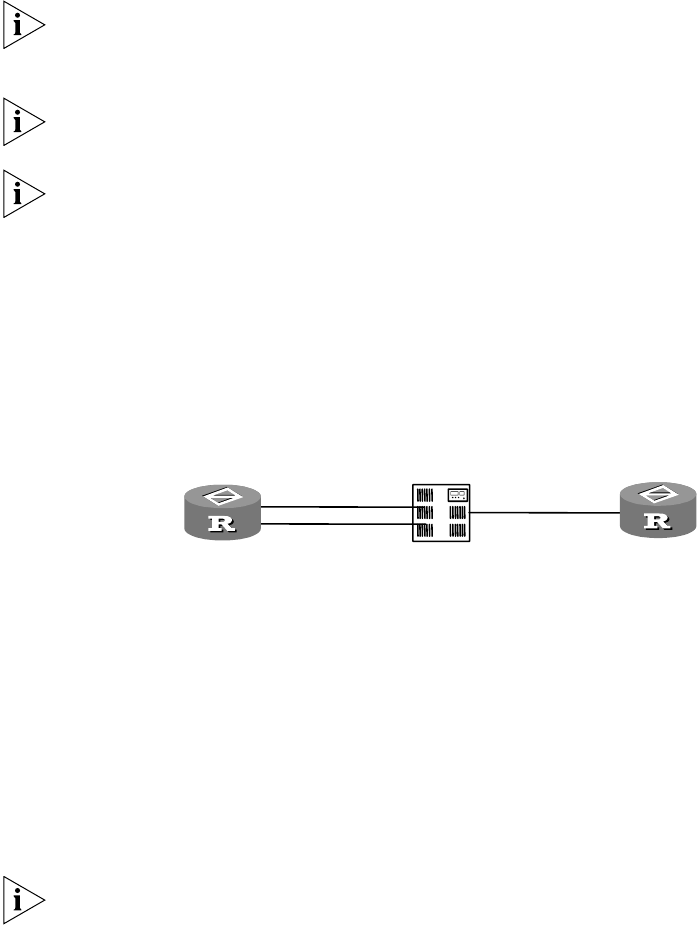
Configure Frame Relay over Other Protocols 271
■ The DCE device identifies the calling number of the incoming call and
authenticates the DTE device according to it to determine whether to accept or
deny the call.
■ If the DTE device passes the authentication, it can establish a B channel to the
DCE device for carrying out the Frame Relay communications.
Normally, if a DCE device is connected to multiple DTE devices, calls can only be
originated from the DTE side. However, it is not the case for back-to-back
connections.
Binding of multiple B channels is not supported. After a call is successfully made, a
DTE device and a DCE device can only be connected via a B channel.
Since a B channel can only be connected to a remote end and cannot have more
than one IP addresses, it cannot be configured with multiple DLCIs, nor configured
with multiple sub-interfaces.
Physical Connection Between Frame Relay over ISDN Devices
■ Back-to-back connection between DTE and DCE devices
The DTE and DCE devices are connected to ISDN via ISDN (BRI or PRI)
interfaces, and both ends can make calls, as shown in the following figure:
Figure 90 Back-to-back connection between DTE and DCE devices
If legacy BDR is adopted on the ISDN interface used with Frame Relay, the
calling party can directly use the configured dial string to make an ISDN call to
the remote end, after it finds an available B channel. If dialer profiles are
adopted, the calling party will re-configure the selected available B channel
with the link layer protocol on the dialer interface, and then use the configured
dial string to place an ISDN call to the remote end.
After a physical B channel is set up, Frame Relay LMI (Local Management
Interface) and inverse ARP process will start. If an agreement is reached
through the negotiation, Frame Relay will be used to carry the network layer
data on the B channel.
If dialer profiles are adopted, the called party searches for the dialer interface
according to the dialing number in the ISDN packet. If the dialer interface is found,
the called party will re-configure the selected B channel with the link layer
protocol on the dialer interface. If the dialer interface is not found but the
dialer
call-in
command has been configured, it will disconnect the call. If the dialer
call-in
command is not configured, PPP will be adopted by default. Therefore,
each dialer interface of the called party should be configured with a unique dialing
number, and can only receive the calls from that number. This restriction, however,
is not placed on the calling parties.
■ Frame Relay switching connection between DTE devices
ISDN
Switch
Router B
Router A
DTE
DCE
Bri0
Bri1
Pri



